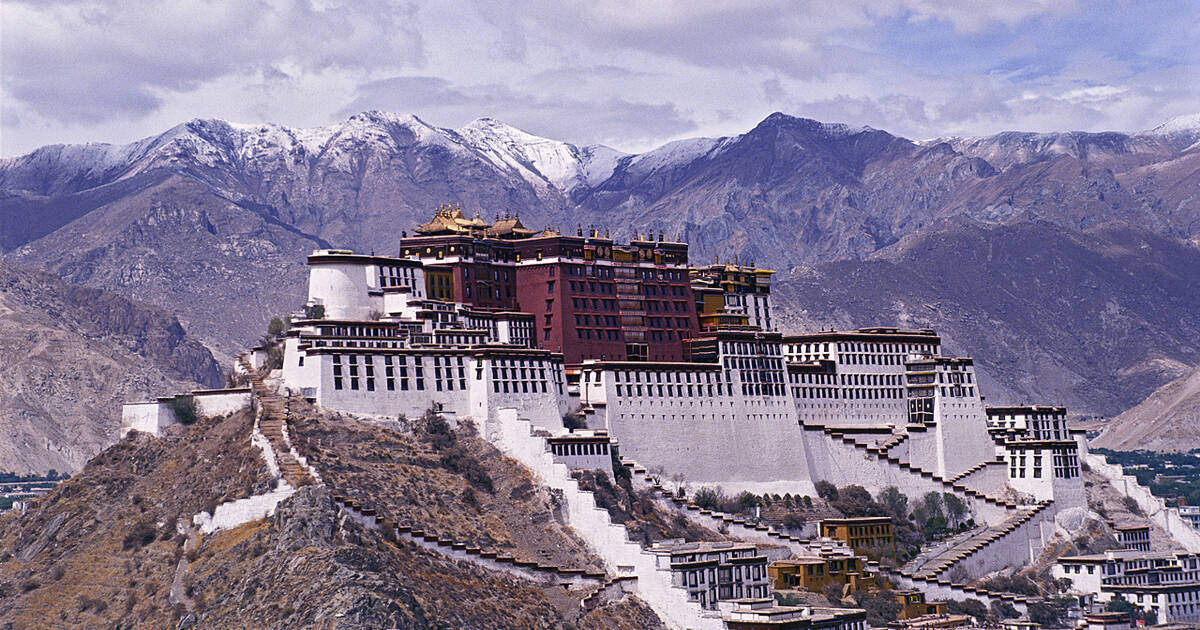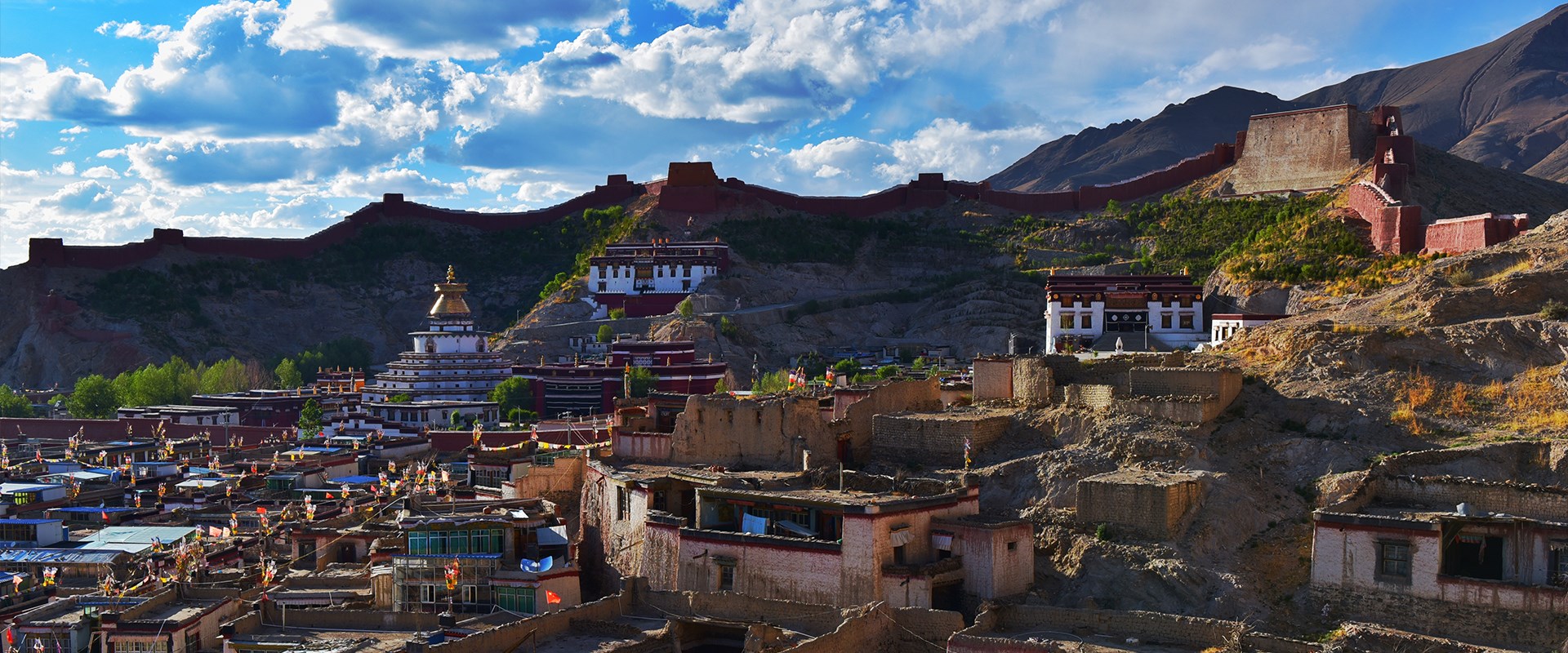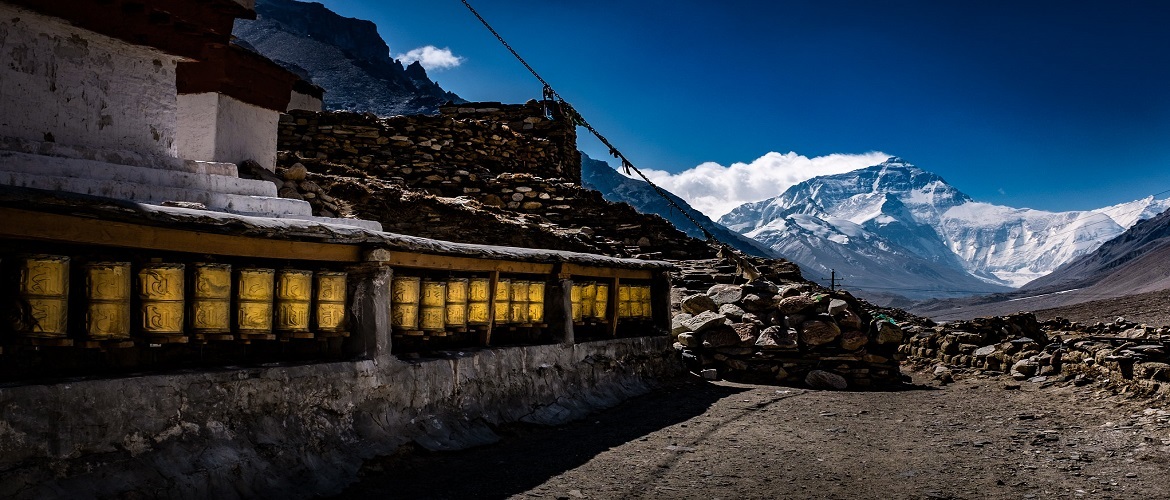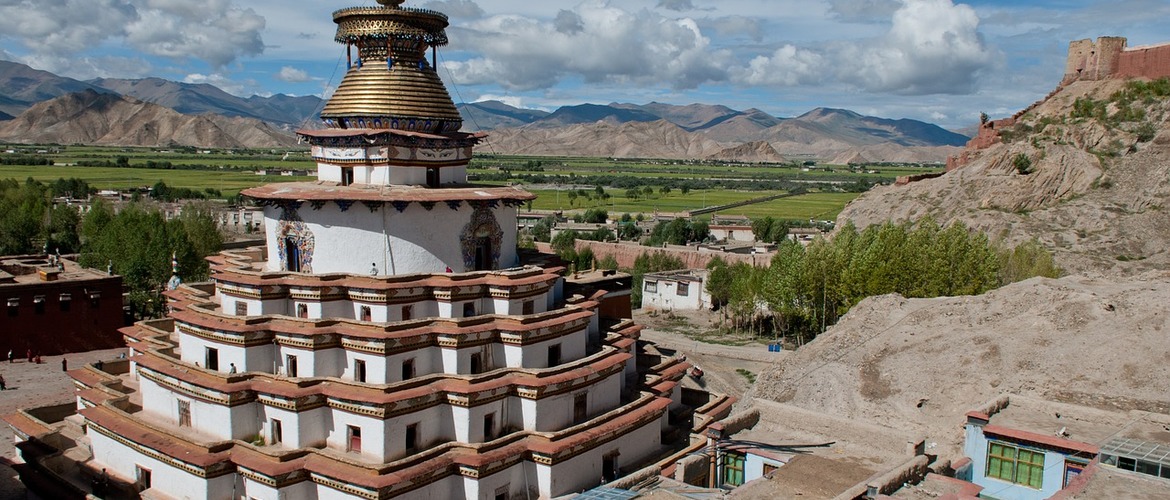Introduction: Tibet Overland Jeep Tour
Welcome to the mystical land of Tibet, a destination that promises an unforgettable overland journey through awe-inspiring landscapes, ancient traditions, and spiritual wonders. Embark on a captivating adventure that will take you through some of the world's most breathtaking scenery, rich cultural heritage, and remarkable landmarks of Tibet.
The Tibet Overland Jeep tour offers a spiritual exploration of a land surrounded by towering mountains and monasteries that resemble celestial bodies. From the bustling streets of Lhasa, the heart of Tibet, to the serene shores of sacred lakes and the foot of the world's highest peak, your journey will be marked by experiences that touch your heart and leave an indelible mark on your soul.
Imagine wandering through the ancient corridors of the Potala Palace, once home to the Dalai Lamas, and feeling the weight of history in every stone. Picture yourself walking the timeless Barkhor Street, where pilgrims from all corners of Tibet gather to circumambulate the revered Jokhang Temple. Imagine the vibrant prayer flags fluttering in the Himalayan breeze, sending wishes for peace and harmony to the heavens.
Traveling overland, you'll traverse mountain passes offering panoramic views of glaciers and valleys. You'll encounter nomadic herders in their traditional tents, gaining insight into a way of life that has remained unchanged for generations. Marvel at the beauty of turquoise lakes like Yamdrok, whose serene waters reflect the purity of the Tibetan Plateau.

How does the Tibet Jeep Tour Begin and End?
Your journey begins in the enchanting city of Kathmandu, Nepal. From here, travel towards the Kerung Border, covering a distance of 145 km in 6-7 hours. Prepare to cross into Tibet, a land of unparalleled beauty and spirituality. After crossing the border, continue your adventure to Tingri, where Tibet's rugged landscapes and high-altitude charm will greet you. The elevation reaches 4300 meters, offering a taste of the heights that await you. Embark on a 390-kilometer journey from Tingri to Shigatse. Along the way, marvel at the changing vistas as you drive through remote areas, catching glimpses of Tibet's diverse landscapes. The road to Lhasa takes you through 260 kilometers of captivating scenery, offering a glimpse into Tibetan culture and heritage. As you approach Lhasa, you'll feel the anticipation of exploring this ancient city at 3650 meters above sea level.
Immerse yourself in the splendor of Lhasa, where you'll spend two days exploring its iconic sites. Lhasa's treasures await your discovery, from the majestic Potala Palace to the bustling Barkhor Street and sacred Jokhang Temple. Embark on a 260-kilometer journey to Gyantse, a town steeped in history and culture. Discover the Pelkor Chöde Monastery and the impressive Kumbum Stupa, showcasing Tibet's artistic and religious heritage.
The journey continues with a drive from Gyantse to Xegar (also known as New Tingri), offering you more opportunities to soak in the breathtaking landscapes that define Tibet. As your Tibetan adventure draws closer, travel back to the Kerung Border, where you'll bid farewell to Tibet's awe-inspiring vistas.
Your overland expedition ends with a return to Kathmandu, completing the full circle of this remarkable journey.
This overland tour is more than just a trip; it's a transformative experience that takes you through diverse landscapes, cultural wonders, and the spiritual essence of Tibet. From the moment you depart Kathmandu to the final stretch of the return journey, you'll be captivated by the beauty and mystique of this extraordinary part of the world.
How to get Prepared for the Tibet Overland Jeep Tour?
Preparing for a long overland trip like the Tibet Overland Tour requires careful planning and consideration, especially given the high altitude and diverse landscapes you'll be traversing. Here's a comprehensive guide to help you prepare for your journey from Trekking Planner:
- Engage in regular physical exercise to improve your stamina and endurance for long drives and walks.
- Consult a doctor before the trip, especially if you have pre-existing health conditions. Discuss altitude sickness prevention and medications.
- The high altitudes can lead to Altitude Sickness. Consider arriving a few days early at a nearby location at a lower height to help your body acclimate gradually.
- Layering is critical, as temperatures vary widely throughout the day.
- Invest in sturdy, comfortable shoes for walking.
- Carry a waterproof jacket and pants to stay dry during unexpected showers.
- Carry prescription medications, altitude sickness remedies, and a basic first-aid kit.
- Sunscreen, sunglasses, and a wide-brimmed hat to shield yourself from intense UV rays.
- Ensure your passport is valid for at least six months beyond your planned return date.
- Arrange the necessary travel permits, and keep all documents organized and easily accessible.
- Obtain travel insurance that covers medical emergencies, trip cancellations, and evacuations, especially in remote areas.
- Carry a mobile phone with international roaming or a local SIM card. Check coverage in remote areas.
- A portable charger for your devices, as you can only sometimes access power outlets.
- Carry enough local currency for expenses in remote areas where ATMs may be scarce.
- Staying hydrated is essential at high altitudes. Carry a reusable water bottle and drink regularly.
- Bring energy bars, nuts, and dried fruits to keep your energy levels up during long drives.
- If you're a photography enthusiast, pack your camera, extra batteries, memory cards, and any necessary equipment.
- Research local customs and traditions to show respect to the local population. Dress modestly when visiting monasteries and religious sites.
- Bring books, music, podcasts, or other forms of entertainment to pass the time during long drives.
- Embrace the journey with an open mind and a positive attitude. Long drives can provide unique opportunities for reflection and bonding with fellow travelers.
By preparing adequately for Tibet Overland Tour, you'll be better equipped to handle the challenges and enjoy the remarkable experiences that await you on this incredible journey.

Major Attractions and Highlights of the Tibet Jeep Tour?
Here are some of the major attractions you will be observing, and the trekking planner recommends some of the best sites that must be witnessed when going on a trip to Tibet. We have prepared a list for you.
- Potala Palace (Lhasa): An iconic symbol of Tibet, the Potala Palace was the winter residence of the Dalai Lama. This magnificent palace complex features stunning architecture, intricate murals, and historical artifacts.
- Jokhang Temple (Lhasa) is a UNESCO World Heritage Site and one of the most sacred temples in Tibet. Pilgrims from all over Tibet gather here, and its Barkhor Street pilgrimage circuit is a bustling hub of activity.
- Barkhor Street (Lhasa): The heart of the old city, this ancient market area encircles the Jokhang Temple. It's a vibrant place to witness Tibetan daily life, shop for unique souvenirs, and soak in the spiritual atmosphere.
- Yamdrok Lake is a stunning turquoise lake surrounded by snow-capped mountains. Its beauty is breathtaking and holds deep spiritual significance for Tibetans.
- Gyantse Kumbum and Pelkor Chöde Monastery: The Kumbum stupa is a remarkable architectural structure with numerous chapels containing intricate murals. The Pelkor Chöde Monastery also offers insights into Tibet's religious history.
- Tashilunpo Monastery (Shigatse): One of Tibet's largest and most important monasteries, it houses a towering statue of the Future Buddha. It's also the traditional seat of the Panchen Lama.
- Tibetan Nomadic Life: Interact with local nomads and gain insights into their traditional way of life, including their unique tents and herding practices.
- Cultural Festivals and Events: Depending on your visit, you might have the opportunity to witness and participate in traditional Tibetan festivals, adding a vibrant cultural dimension to your tour.
- Stunning Landscapes: Throughout the journey, you'll be treated to breathtaking vistas of the Tibetan plateau, mountain ranges, high-altitude plains, and dramatic scenery.
Note: Everest Base Camp in Tibet, also known as the North Base Camp or Base Camp of Everest, can be visited at an additional cost of $250–300.

What is The Best Time or season for a jeep tour in Tibet?
From years of experience regarding the Tibet Overland tour and Trekking Planner recommends the best time to embark on a Tibet Overland Tour depending on your preferences and the experiences you wish to have during your journey. Tibet's weather and conditions vary significantly throughout the year. The primary tourist season in Tibet is from late spring to early autumn due to more favorable weather conditions.
- Spring (April to July): Spring is one of the most popular times to visit Tibet. During this period, the weather is relatively mild, and the landscapes are adorned with colorful wildflowers, creating picturesque views. The temperatures are comfortable, and the clear skies provide excellent visibility of the stunning mountain ranges, making it an ideal time for photography. However, remember that some parts of the region might still be chilly due to the high altitude.
- Autumn (September to October): Another excellent time to visit Tibet is during the autumn months. The weather remains relatively stable, and the skies are often straightforward, offering breathtaking views of the Himalayan peaks. The landscapes take on warm hues, creating a picturesque backdrop for your journey. The temperatures are comfortable during the day, but nights can still be chilly at high altitudes.
While these two seasons are generally considered the best times to visit Tibet, preparing for the high-altitude conditions is essential. Altitude sickness can affect some travelers, so acclimatization is crucial. Also, remember that Tibet's weather can be unpredictable, and conditions can change rapidly, especially in higher-altitude regions.
It’s a good idea to consult with a Trekking Planner tour operator to get detailed, specific advice based on your travel dates, preferences, and any travel restrictions or requirements during your visit.

What are the Documents and permits required for traveling to Tibet?
Traveling to Tibet, particularly overland, requires specific documents and permits due to the region's unique political and cultural situation. Here are the essential documents, permits, and licenses you will need:
- Chinese Visa for Tibet: Since Tibet is an autonomous region of China, you'll need a valid Chinese tourist visa to enter Tibet. Apply for this visa through the Chinese embassy or consulate in your home country before your trip.
- Tibet Travel Permit (TTP): This is the primary permit required for entering Tibet. You can only board a flight or train to Tibet with it. However, you can't apply for this permit individually; a registered travel agency usually arranges it as part of your tour package.
- Aliens' Travel Permit for Tibet (ATP): If you plan to visit areas outside Lhasa, you'll need the Aliens' Travel Permit. This permit is obtained after arriving in Tibet, and Trekking Planner will handle the application process.
- Military Permit for Permit: You might need a military permit if your itinerary includes sensitive border areas or certain restricted areas. Trekking Planner Nepal will arrange this if necessary.
- Group Visa for Tibet: If you're entering Tibet from Nepal, you'll need a group visa instead of an individual Chinese visa. Trekking Planner arranges this.
- Passport: Your original passport is required throughout your journey. Ensure it's valid for at least six months beyond your departure date.
- Tibet Travel Itinerary: Trekking Planner provides your detailed Tibet travel itinerary, including places you plan to visit, accommodations, and travel dates.
- Tour Confirmation Letter: This letter, provided by Trekking Planner, confirms your tour arrangements and helps facilitate the issuance of permits.
- Additional permits (if applicable): Depending on your itinerary, you might need additional permits, like the Frontier Pass, to visit certain border areas.
Remember that regulations and requirements for travel to Tibet can change, so it's crucial to stay updated and work with a reputable travel agency to guide you through the permit application process and ensure a smooth legal journey. It's also advisable to plan your trip well in advance to allow sufficient time for permit processing.
Trekking Planner prepares all these necessary documents and permits for Tibet for your trip to make your experience hassle-free.
Note: After coming to Nepal, obtaining all these permits takes at least three days, so we advise you to keep some extra days in Kathmandu to prepare the necessary documents. Original passports are required to complete the documents and travel permits, and e-passports don’t work.
- Trekking Planner prepares all the necessary documents for your trip to Tibet after your arrival and submission of passport details.
- E-passports do not work. A physical, original passport is required throughout the trek.
- You must apply for a form and submit the form to Trekking Planner pvt. ltd.
Currently, the only option to get to Tibet is by car, and the closest destination to go through from Nepal is Kerung, which is around a 5- to 6-hour drive from Kathmandu.





